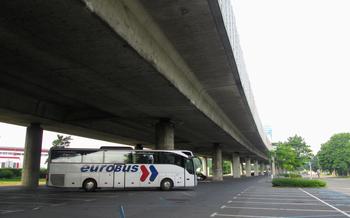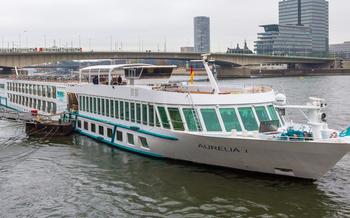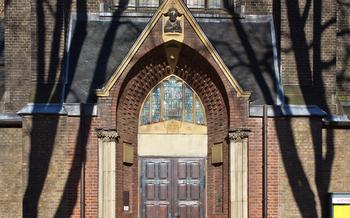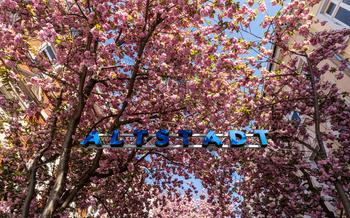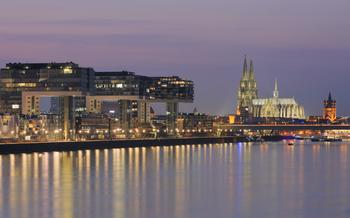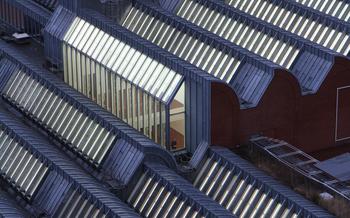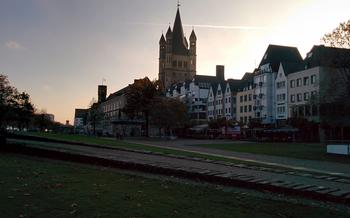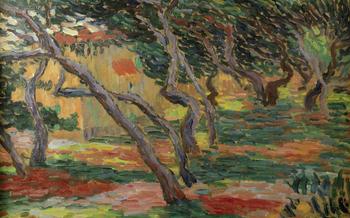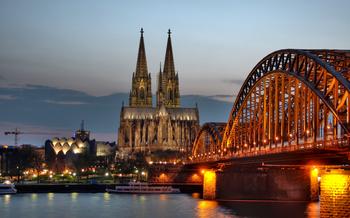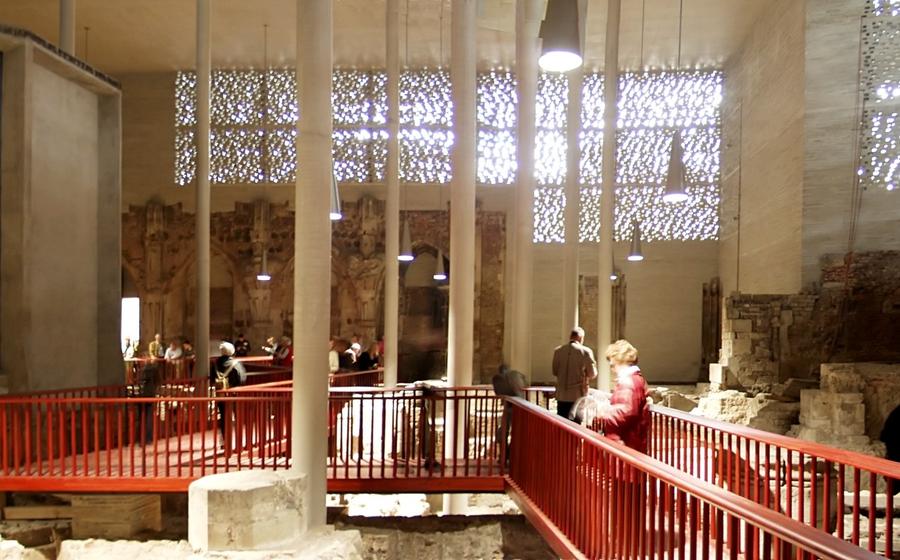
Kolumba
- Kolumba Museum: A Masterpiece of Modern Architecture
- Exploring the Museum's Collection: Art Through the Ages
- Medieval Masterpieces: The Heart of the Kolumba
- Modern and Contemporary Art: A Dialogue with the Past
- Interactive Exhibitions and Installations
- Guided Tours and Workshops: Unveiling the Museum's Secrets
- Museum Shop and Café: Souvenirs and Refreshments
- Accessibility and Inclusivity: Welcoming All Visitors
- Location and Transportation: Getting to the Kolumba
- Hours of Operation and Admission Fees: Planning Your Visit
- Photography and Social Media: Capturing Your Experience
- Sustainability and Environmental Initiatives: A Commitment to the Future
- Historical Context: The Legacy of the Kolumba Site
- Temporary Exhibitions: A Dynamic Showcase of Contemporary Art
- Insider Tip: Hidden Gems and Secret Spots
Kolumba Museum: A Masterpiece of Modern Architecture
The Kolumba Museum, located in the heart of Cologne, Germany, is a striking example of modern architecture that seamlessly blends with the city's rich historical fabric. Situated on the site of a former Romanesque church destroyed during World War II, the museum's unique design by renowned Swiss architect Peter Zumthor pays homage to the past while embracing the future.
Zumthor's architectural masterpiece features a combination of old and new materials, with exposed brick walls and concrete elements creating a harmonious dialogue between history and modernity. The museum's fragmented structure, reminiscent of the ruins of the old church, invites visitors to explore and discover the hidden treasures within.
The Kolumba Museum stands as a testament to the power of architecture to transcend time and create a space that is both deeply rooted in history and resolutely forward-looking. Its innovative design not only complements the surrounding cityscape but also provides a unique backdrop for the museum's diverse collection of art from different eras.
Exploring the Museum's Collection: Art Through the Ages
The Kolumba Museum houses an extensive collection of artworks spanning from antiquity to the present day, offering visitors a comprehensive journey through the history of art. Highlights include masterpieces from the Middle Ages, such as the intricately carved "Madonna and Child" sculpture from the 13th century and the vibrant stained glass windows depicting biblical scenes. The museum also features a significant collection of Renaissance and Baroque paintings, including works by Peter Paul Rubens, Anthony van Dyck, and Guido Reni.
In the modern and contemporary art section, visitors can admire works by Pablo Picasso, Andy Warhol, and Gerhard Richter, among others. The museum's curatorial approach focuses on presenting art within its historical and cultural context, allowing visitors to trace the evolution of artistic styles and movements over time. Thematic exhibitions and special displays delving into specific periods or genres further enrich the visitor experience, providing a deeper understanding of the museum's diverse collection.
Medieval Masterpieces: The Heart of the Kolumba
The Kolumba Museum houses a remarkable collection of medieval art, a testament to Cologne's rich cultural heritage. Among the highlights are exquisite sculptures, paintings, and liturgical objects that offer a glimpse into the artistic achievements of the Middle Ages. These works, spanning from the early Christian era to the late Gothic period, showcase the evolution of artistic styles and techniques.
One of the most iconic pieces in the collection is the "Madonna of the Rose Garden," a 13th-century sculpture carved from limestone. The serene expression of the Virgin Mary and the intricate details of her robes and the surrounding foliage exemplify the mastery of medieval sculptors. Another highlight is the "Reliquary of the Three Kings," an opulent 12th-century reliquary adorned with gold, enamel, and precious stones. This masterpiece of goldsmithing once held the relics of the Three Wise Men and symbolizes the importance of religious relics in medieval Christianity.
The museum's presentation of medieval art goes beyond individual objects, creating a dialogue between artworks and the historical context in which they were created. Visitors can explore the connections between art, religion, and society, gaining a deeper understanding of the medieval worldview. The Kolumba Museum's medieval collection offers a captivating journey through a significant period in art history, showcasing the artistic genius and spiritual fervor of the Middle Ages.
Modern and Contemporary Art: A Dialogue with the Past
The Kolumba Museum's embrace of modern and contemporary art creates a dynamic dialogue between historical and contemporary artworks. This juxtaposition challenges traditional notions of art history and invites visitors to explore the evolution of artistic expression across centuries. Notable modern and contemporary artists featured in the collection include Gerhard Richter, Anselm Kiefer, and Rosemarie Trockel, whose works engage with themes of identity, memory, and the human condition.
The museum's curatorial approach fosters a conversation between the old and the new, allowing visitors to trace the threads of artistic influence and innovation. By presenting modern and contemporary works alongside medieval masterpieces, the Kolumba Museum invites visitors to consider the ways in which art reflects and responds to changing social, political, and cultural contexts.
This interplay between past and present creates a thought-provoking and immersive experience, encouraging visitors to question their assumptions about art and its role in society. The Kolumba Museum's commitment to showcasing both historical and contemporary art ensures that it remains a vital and relevant institution, offering fresh perspectives on the ever-evolving landscape of artistic creation.
Interactive Exhibitions and Installations
The Kolumba Museum is renowned for its commitment to creating engaging and interactive exhibitions that bring art to life for visitors of all ages. Through innovative multimedia installations, hands-on activities, and digital displays, the museum enhances the visitor experience and makes art more accessible and enjoyable.
One of the most popular interactive exhibits is the "Touch and Feel" station, where visitors can explore replicas of famous sculptures and artworks, allowing them to experience art through the sense of touch. Another highlight is the "Virtual Reality Experience," which transports visitors back in time to the medieval period, offering a glimpse into the lives and works of the artists and artisans who shaped Cologne's rich cultural heritage.
The museum also features a variety of interactive workshops and educational programs designed to engage and inspire visitors. These workshops cover a wide range of topics, from art history and techniques to hands-on activities that allow participants to create their own works of art. Whether you're a child, an adult, or a family, there's something for everyone at the Kolumba Museum.
By embracing interactive and engaging elements, the Kolumba Museum fosters a deeper understanding and appreciation for art, making it a truly immersive and unforgettable experience for visitors from all walks of life.
Guided Tours and Workshops: Unveiling the Museum's Secrets
The Kolumba Museum offers a range of guided tours that delve deeper into the museum's collection and its significance. Led by knowledgeable docents, these tours provide insights into the history, techniques, and symbolism behind the artworks, enhancing the visitor experience.
The museum also organizes specialized workshops and educational programs for visitors of all ages, including families and school groups. These workshops offer hands-on activities, interactive displays, and creative challenges that make learning about art fun and engaging.
For a truly immersive experience, visitors can participate in behind-the-scenes tours that provide a glimpse into the museum's conservation and research activities. These tours offer a unique opportunity to learn about the care and preservation of artworks, as well as the latest research and discoveries in the field of art history.
Through these guided tours and workshops, the Kolumba Museum promotes a deeper appreciation for art and cultural heritage, fostering a sense of curiosity and wonder among visitors of all ages.
Museum Shop and Café: Souvenirs and Refreshments
The Kolumba Museum offers a well-stocked shop where visitors can find a variety of art-related souvenirs, books, and gifts. These items range from postcards and posters to replicas of artworks and unique handcrafted pieces inspired by the museum's collection. The shop is a great place to pick up a memento of your visit or find a thoughtful gift for an art enthusiast.
The museum also has an on-site café or restaurant where visitors can relax and enjoy refreshments while immersing themselves in the museum's atmosphere. The café offers a selection of locally-sourced and artisanal products, including coffee, tea, pastries, sandwiches, and salads. Visitors can enjoy their refreshments indoors or outdoors, depending on the weather, while taking in the vibrant surroundings of the museum.
The museum's commitment to sustainability extends to its shop and café. The shop offers a range of eco-friendly products, such as reusable water bottles and tote bags, and the café uses locally-sourced and organic ingredients whenever possible. By supporting the museum's shop and café, visitors can not only enhance their visit but also contribute to the museum's mission of promoting sustainability and cultural heritage.
Accessibility and Inclusivity: Welcoming All Visitors
The Kolumba Museum is committed to creating an inclusive and welcoming environment for all visitors, regardless of their abilities or backgrounds. The museum offers a range of accessibility features to ensure that everyone can enjoy and appreciate the art on display. Wheelchair ramps and elevators provide easy access to all levels of the museum, and audio guides are available in multiple languages for visitors with hearing impairments. The museum also offers educational programs and resources tailored to diverse audiences, including visually impaired and hearing-impaired visitors. Multilingual signage and materials cater to international visitors and non-native speakers. By providing these essential services and facilities, the Kolumba Museum demonstrates its commitment to inclusivity and creates a welcoming space for all visitors to engage with and appreciate art.
Location and Transportation: Getting to the Kolumba
The Kolumba Museum is conveniently located in the heart of Cologne, a city steeped in history and cultural attractions. Situated on Kolumbastraße 4, the museum is easily accessible by various modes of transportation.
For those arriving by public transport, the museum is well-connected by bus and tram lines. The nearest bus stop, Kolumba, is just a short walk away, served by bus lines 132 and 13Alternatively, the nearest tram stop, Neumarkt, is a few minutes' walk away, providing access to tram lines 1, 7, and
If you prefer to drive, there are several parking options available near the museum. The closest parking garage is the APCOA Neumarkt Parking Garage, located just a few steps away from the museum. Additionally, there are several on-street parking spaces in the surrounding area.
Once you arrive in the area, take a moment to explore the vibrant surroundings. The Kolumba Museum is situated in the heart of Cologne's Old Town, a charming district filled with historical landmarks, cozy cafes, and boutique shops. The iconic Cologne Cathedral, a UNESCO World Heritage Site, is just a short walk away, inviting you to explore its awe-inspiring architecture and rich history.
Hours of Operation and Admission Fees: Planning Your Visit
The Kolumba Museum is open to the public on Tuesdays through Sundays, with extended hours on Thursdays. Regular hours are from 10 am to 6 pm, and on Thursdays, the museum stays open until 8 pm. Visitors are advised to check the museum's website for any special hours or holiday closures before planning their visit.
Admission fees vary depending on the visitor's age and status. Adults pay a standard admission fee, while students, seniors, and children under the age of 18 are eligible for discounted rates. Family tickets are also available, offering a reduced price for groups of two adults and up to three children.
Advance ticket purchase is recommended, especially during peak tourist season or for special exhibitions. Visitors can purchase tickets online through the museum's website or at the museum's ticket counter. Online ticket purchase often comes with a small discount and allows visitors to skip the line and enter the museum directly.
For further information on hours of operation, admission fees, or group bookings, visitors can contact the museum's information desk by phone or email. The museum staff is always happy to assist with any inquiries and help visitors plan their visit to the Kolumba Museum.
Photography and Social Media: Capturing Your Experience
The Kolumba Museum encourages visitors to capture their experience and share it with the world through photography and social media. Designated areas within the museum are marked where photography is permitted, allowing visitors to document their favorite artworks and share them with friends and followers. The museum also welcomes visitors to share their experiences on social media using designated hashtags and platforms. By doing so, visitors not only help promote the museum but also engage with a broader audience, fostering a sense of community and appreciation for art.
Sustainability and Environmental Initiatives: A Commitment to the Future
The Kolumba Museum is committed to sustainability and environmental responsibility, recognizing the importance of preserving the planet for future generations. The museum's building incorporates energy-efficient design features, such as natural lighting and geothermal heating, to minimize its carbon footprint. Waste reduction and responsible sourcing practices are also prioritized, with a focus on using recycled and eco-friendly materials whenever possible.
Through educational programs and exhibitions, the Kolumba Museum raises awareness about environmental issues and promotes sustainable practices among its visitors. The museum collaborates with local partners and organizations to support green initiatives and foster a sense of community responsibility. These efforts contribute to a more sustainable future for the arts and culture sector, demonstrating the museum's commitment to both art and the environment.
Historical Context: The Legacy of the Kolumba Site
The Kolumba Museum is not just a repository of art; it is a physical manifestation of Cologne's rich history and resilience. The museum stands on the site of a former Romanesque church, St. Kolumba, which was tragically destroyed during the devastating air raids of World War II. This cataclysmic event left a gaping wound in the heart of Cologne's cultural landscape, a scar that the Kolumba Museum seeks to heal through art and architecture.
During the museum's construction, archaeological excavations unearthed remnants of the original church, providing invaluable insights into Cologne's past. These fragments, like scattered puzzle pieces, have been seamlessly integrated into the museum's design, creating a poignant dialogue between past and present. Visitors can trace the footsteps of history as they wander through the museum's galleries, encountering remnants of the medieval church alongside contemporary artworks.
The Kolumba Museum's connection to Cologne's history is not merely symbolic; it is a tangible and visceral experience. The very ground beneath the museum pulsates with the city's past, its stories, and its indomitable spirit. This profound connection enriches the visitor experience, adding layers of meaning to the artworks on display.
Temporary Exhibitions: A Dynamic Showcase of Contemporary Art
The Kolumba Museum is not just about its permanent collection; it also hosts a dynamic program of temporary exhibitions that showcase the works of emerging and established contemporary artists. These exhibitions are curated to encourage experimentation, innovation, and cross-disciplinary collaborations, pushing the boundaries of artistic expression.
Past temporary exhibitions have generated significant buzz and critical acclaim, attracting art enthusiasts from around the world. For example, the "Traces of the Sacred" exhibition explored the relationship between art and spirituality in contemporary society, featuring works that challenged traditional notions of religious iconography. Another notable exhibition, "The Body Electric," delved into the theme of the human body in the digital age, presenting works that explored the intersection of technology and the physical form.
These temporary exhibitions contribute to the vitality and relevance of the Kolumba Museum, ensuring that it remains a vibrant hub for contemporary art and discourse. They offer visitors an opportunity to engage with cutting-edge artistic practices and to gain new perspectives on the ever-evolving landscape of contemporary art.
Insider Tip: Hidden Gems and Secret Spots
As you wander through the Kolumba Museum, keep an eye out for hidden gems that often go unnoticed by casual visitors. In the medieval art section, don't miss the exquisite ivory carvings from the 13th century, which showcase intricate craftsmanship and biblical narratives. Among the modern and contemporary works, look for the mesmerizing light installation by Ólafur Elíasson, which creates a magical and immersive experience.
For a moment of tranquility, step into the museum's inner courtyard, a serene oasis with a reflecting pool and lush greenery. It's the perfect place to sit, reflect on the art you've seen, and soak in the peaceful ambiance.
To extend your cultural exploration, venture beyond the museum walls and discover the surrounding area. Just a short walk away, you'll find the Museum Ludwig, which houses an impressive collection of modern and contemporary art, including works by Picasso, Warhol, and Lichtenstein. And if you're a fan of Romanesque architecture, don't miss the nearby Groß St. Martin Church, a stunning example of 12th-century craftsmanship.
Local tip: For an authentic culinary experience, head to one of the traditional breweries in the city center, such as Früh am Dom or Gaffel am Dom, and indulge in a hearty Kölsch beer paired with local specialties like Himmel un Ääd (blood sausage with mashed potatoes) or Rievkooche (potato pancakes).
